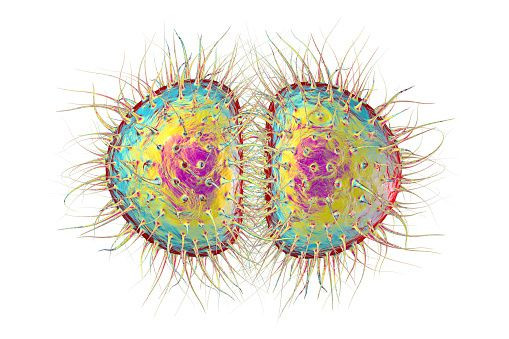These States Have The Highest STD Infections
A report released Wednesday by the Centers for Disease Control and Prevention showed that sexually transmitted diseases in the U.S. hit an all-time high for the sixth consecutive year. There were more than 2.5 million cases reported in 2019.
The data from the agency analyzed the three most common STDs - chlamydia, gonorrhea, and syphilis - and which states saw the highest number of cases each.
From 2015 to 2019, the CDC said that there was nearly a 30% increase in the number of STD cases reported, with the sharpest increase occurring in syphilis cases in newborns, which quadrupled from 2015 to 2019.
“Less than 20 years ago, gonorrhea rates in the U.S. were at historic lows, syphilis was close to elimination, and advances in chlamydia diagnostics made it easier to detect infections,” Raul Romaguera, acting director for CDC’s Division of STD Prevention, said in a statement. “That progress has since unraveled, and our STD defenses are down. We must prioritize and focus our efforts to regain this lost ground and control the spread of STDs.”
STDs can present serious health complications for individuals as many people that have them do not always display symptoms, the CDC said. But, the agency warned, if the STD is left untreated can “increase the risk of HIV infection, or can cause chronic pelvic pain, pelvic inflammatory disease, infertility, severe pregnancy and newborn complications, and infant death.”
One of the STDs tracked in the CDC’s report was chlamydia – an STD that can infect both men and women, which is spread through vaginal, anal, or oral sex but cured through medications.
The agency’s data found that the state with the highest reported cases of chlamydia was Alaska. It was followed by Mississippi, Louisiana, South Carolina, New Mexico, North Carolina, Georgia, Alabama, New York, and Illinois.
The state with the lowest number of reported chlamydia cases was New Hampshire.
The CDC also tracked the number of reported gonorrhea cases in the U.S. for 2019.
Gonorrhea is also spread through vaginal, anal, or oral sex. It can also be passed to newborns from their mothers during childbirth. Medications can cure the disease.
Mississippi took the top spot for the most gonorrhea infections. It was followed by Alaska, Alabama, South Carolina, Louisiana, Oklahoma, Missouri, North Carolina, South Dakota, and Tennessee, while Vermont had the lowest number of gonorrhea cases reported in 2019, according to the CDC.
CDC’s data on syphilis showed that Nevada had the most infections out of any state in the U.S. for 2019. But for congenital syphilis, it was Texas.
Congenital syphilis is passed from the pregnant mother to the newborn, while syphilis is spread through syphilitic sores called chancres. Medication can cure the disease, but people can become reinfected. Congenital syphilis can also cause miscarriages, stillborns, and newborn deaths.
Other states with high infection rates of syphilis were New Mexico, Mississippi, California, Oklahoma, Arizona, Alaska, Georgia, Louisiana, and Florida, while states with a high number of cases of congenital syphilis included Arizona, New Mexico, Nevada, Louisiana, California, Oklahoma, Florida, Arkansas, and Maryland.
For 2020, the outlook on STDs also does not look good. While data is still being compiled for the year, the CDC said that preliminary numbers suggest that the “concerning trends” continued for 2020, despite the disruptions in testing and reporting due to the COVID pandemic.

© Copyright IBTimes 2025. All rights reserved.





















